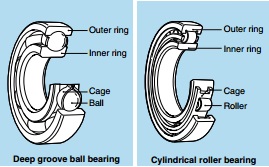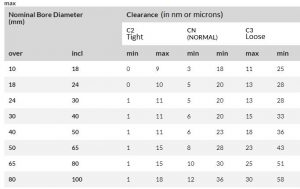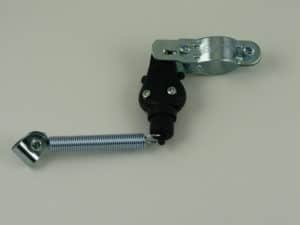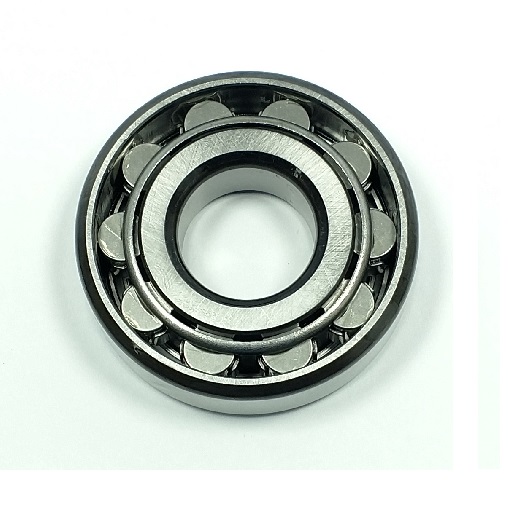Subtotal:
BEARING CLEARANCES
We get this question fairly often. There are many articles on the web that explain this subject in much greater detail. This article will briefly touch on radial internal clearances as it pertains to British Motorcycle repair.
Bearings have been around in one form or another since ancient times (wood and stone rollers). Both da Vinci and Galileo both drew ideas for bearing designs. In only the last 200 years have they been perfected in material and design. In 1794 British inventor Philip Vaughan was awarded the patent for modern caged steel ball bearing.
The two types of bearings we will mention are ball and roller designs. The ball type (mostly deep groove type) can be found extensively on any machine today. Roller bearings began appearing on British motorcycles in the 1960’s. Application of roller bearings was limited to crankshafts but in the 1970’s we began to see caged rollers in the gearbox. Just recently roller bearings began to update steering neck bearings.
There are 4 components to any bearing: inner race (that the rotating shaft goes through), outer race (that is pressed into a casing), the rolling element ball or cylindrical roller, and the cage.

Wheel bearings for example will also have a metal or rubber seal to retain grease and keep out debris.
When it comes to selecting a replacement bearing there are 4 size criteria to consider. You have the 3 dimensions: ID (internal diameter), OD (outside diameter) and width. The 4th size is clearance or more specifically radial internal clearance. This is the distance between the rolling element and the inner and outer races. It has nothing to do with how the bearing fits the rotating shaft that passes through the inner race. You could also call it the “play” between the rollers and the bearing race. You might ask why this matters. Well there are several reasons:
When a bearing is mounted the clearance can be reduced slightly. Heat, as you would find inside an engine, would also be a factor. On crank bearings you will find that sometimes there are alignment issues from left to right. Since most British machines have vertically split cases this issue does arise more than you would like. Case halves were paired up and stamped with an ID mark once a “good” match was found. This could be why many of the bearings used are in the C3 clearance (larger than standard).

Pre-Unit Triumph is a notable example. All Triumph twins till 1965 (with the exception of the all alloy T100 engine) used ball bearings on both sides of the crank shaft. This bearing was in the larger C3 condition. Folks have discovered that using roller bearings in the C Normal condition (trying to improve on the factory design), on these engines, that a crank may feel very stiff or not rotate at all once the cases are bolted together. We always advise using the same clearance of bearing that came out of a bike.
A bearing with too much clearance can cause vibration both axial and radially. Bearings installed in an application with too little clearance can cause over heating and damage to the bearings. Typically bearings running tight will not last very long. Bearings can also “skid” within the race. This is when the rolling element sticks and slides along the race rather than rolling. Skidding is more commonly seen in caged cylindrical roller bearings than caged ball type.
Identifying Bearings:
New bearings are usually marked with the clearance on the packaging and the race. Previously RHP and other makers used etched circles rather than stamping the actual number. CN condition was indicated by two round “OO”.
Scribe marks can often be very hard to identify as they can be vary faint, usually holding the bearing in the proper light helps. Older bearings in a condition other then CN will have the same or similar markings depending on brand. Bearings in a C3 condition for example will have marks such as “OOO”. C2 bearings will have a single “O” etched.
Bearing clearance works in this order: C3, CN & C2. There are more bearing clearances used but the three mentioned here are the most common. Notice how C3 is first, then CN, and along with C2. C3 is known as a “loose fit” while C2 is know as a “tight fit”.
Examples of clearances (too small to measure without specialized equipment). Measurements are in microns.

Crank bearings Triumph and BSA unit twins:
1963-1965 Drive side ball bearing – C3
1963-1965 Timing side ball bearing – C3 (70-1591 Triumph only, BSA has a bushing)
1966-72 Drive side roller bearing- CN (70-2879A Triumph 650, 68-0625 BSA)
1966-72 Timing side ball bearing – C3 (70-1591 Triumph only, BSA has a bushing)
70-2879 updated to tighter C2 clearance in 1973 with introduction of the 750 T140 model.
1973-82 Drive side roller bearing- C2 (70-2879 Triumph 750)
1973-80 Timing side ball bearing – C3 (60-4167 Metric)
1980-85 Timing side roller bearing – C3 (60-7362 Metric can be used 73-on but requires shims on crank for end float)
 JRC 0086
JRC 0086 